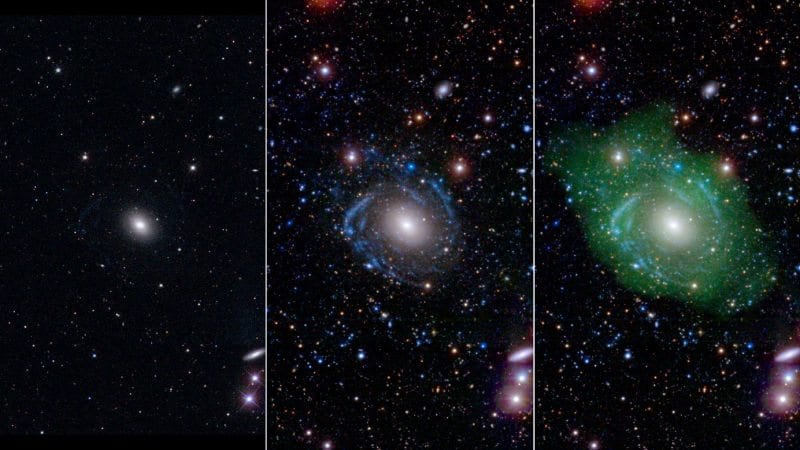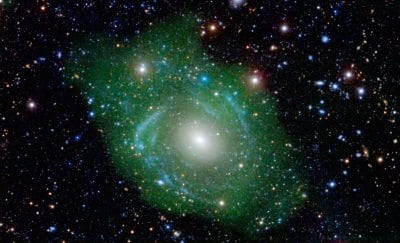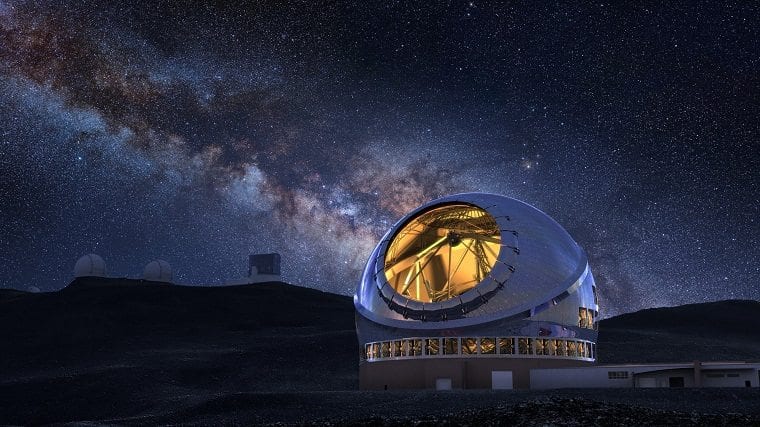Astronomers thought that the dull, unremarkable mixture of random floating bodies that lies 250 million light years away from us, is nothing interesting – they couldn’t be more wrong. Upon closer look scientists were baffled to find a huge, mysterious and unique galaxy. It is believed that this galaxy was formed by parts of other galaxies.

UGC-1382 a galaxy considered small previously has been discovered to have huge surprises. According to a study published in Astrophysical Journal and a story highlighted on NASA’s website, the galaxy is 10 times bigger than we’d previously thought. The most remarkable thing about UGC-1382 is that unlike other galaxies its inner parts and younger than its outer parts. This has led to a solid suspicion that galaxy came into being by using “spare parts” from other galaxies.
Dubbed ‘Frankenstein galaxy’ by scientists, it homes in a quiet neighborhood in our universe. It is like living in a cabin in the woods, away from noise and humdrum of busy active galaxies. It is a galaxy surviving in isolation.
According to Mark Seibert of the Observatories of the Carnegie Institution for Science, Pasadena, California, (who is the co-author of this study),
“It (the galaxy) is so delicate that a slight nudge from a neighbor would cause it to disintegrate.”
And just like most important discoveries around it, this discovery was also an accident, – it’s weird how much we discover things accidently – Seibert and Lea Hagen, a graduate student at Pennsylvania State University, University Park were looking for stars forming in the elliptical galaxies that do not spin. They are more three dimensional and are more like American football shaped, as opposed to flat disks. It was believed that UGC-1382 was one of such galaxies.
The unsuspecting duo made a startling discovery when they were looking at the images of various galaxies in ultraviolet light at NASA’s Galaxy Evolution Explorer (GALEX). Seibert and Hagen observed something “emerging” from the darkness.

“We saw spiral arms extending far outside this galaxy, which no one had noticed before, and which elliptical galaxies should not have,” said Hagen. “That put us on an expedition to find out what this galaxy is and how it formed.”
After the discovery researchers decided to investigate more about the mysterious galaxy. They started using different telescopes that included: the Sloan Digital Sky Survey, the Two Micron All-Sky Survey (2MASS), NASA’s Wide-field Infrared Survey Explorer (WISE), the National Radio Astronomy Observatory’s Very Large Array and Carnegie’s du Pont Telescope at Las Campanas Observatory.
After discovering startling images b GALEX, scientists employed other telescopes in order to develop a detailed model of this galaxy.
The bizarre UGC-1382
The scientists discovered that UGC-1382 is roughly 720,000 light years away. It is seven times larger than our Milky Way. It is the third largest isolated disk galaxy ever discovered. The composition of the galaxy consists of low density gas. Stars are seldom formed in this galaxy because the gas is spread out.
But the most interesting fact about galaxy’s composition is its components backwards formation. Normally galaxies’ innermost components are developed first and they contain the oldest stars. But with UGC-1382 it is the opposite. After gathering as much data as scientists could, they started piecing together the data. The result was startling.
As explained by Seibert himself:
“The center of UGC 1382 is actually younger than the spiral disk surrounding it,” he said. “It’s old on the outside and young on the inside. This is like finding a tree whose inner growth rings are younger than the outer rings.”
This exceptional galactic structure was formed by various separate entities coming together, normally it is the one entity that grows and expands (e.g., Big Bang). It seems that various parts of the galaxy evolved independently before they merged.
More to come?

The scientists are not sure if more galaxies like ‘Frankenstein’ galaxy exist. But having discovered UGC 1382 could be a building block for future explorations:
“By understanding this galaxy, we can get clues to how galaxies form on a larger scale, and uncover more galactic neighborhood surprises,” Hagen said.
[adinserter block=”2″]
[adinserter block=”7″]